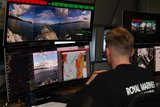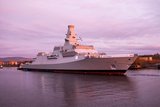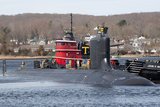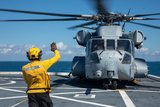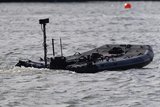Boeing wins P-8A Poseidon aircraft order
Boeing has been awarded a $2.2 billion contract to produce at least 17 P-8A Poseidon aircraft for the US Navy, the Royal Australian Air Force (RAAF) and the Royal Air Force, the company announced on 3 April.
The contract, awarded on 30 March, also includes options for 32 P-8A additional aircraft as well as money for long-lead parts for future orders.
The US Navy will receive 11 P-8A aircraft, while Australia will receive four. The UK's first two P-8A jets are part of the agreement, with first delivery scheduled for 2019.
Boeing so far has delivered 53 Poseidons to the US Navy and two to the RAAF.
The four aircraft for Australia are the additional aircraft announced in the Turnbull government's Defence White Paper in 2016, and they take the total for the RAAF to 12 aircraft. The White Paper also forecast that a further three aircraft, for a total of 15, will be acquired early next decade.
A Boeing spokesperson said the 32 additional P-8As in the contract were earmarked for potential Foreign Military Sales (FMS) customers, but would not comment on whether two of the number are for the Royal New Zealand Air Force.
New Zealand is understood to have requested pricing and availability details for the possible acquisition of two P-8A aircraft. The Poseidon is under consideration for the RNZAF's Future Air Surveillance Capability requirement, which will replace existing Lockheed P-3K2 Orions.
The P-8A is designed for advanced anti-submarine, anti-surface warfare and intelligence, surveillance and reconnaissance missions. The US Navy has deployed multiple squadrons globally since 2013, accumulating over 96,000 flight hours.
Related Equipment in Defence Insight
More from Naval Warfare
-
![Hanwha wins Australian government approval to increase its stake in Austal]()
Hanwha wins Australian government approval to increase its stake in Austal
The contract would mean the two shipbuilders can collaborate strategically and enhance shipbuilding capabilities in Western Australia.
-
![Royal Australian Navy sizes up modernisation plans for new and existing capabilities]()
Royal Australian Navy sizes up modernisation plans for new and existing capabilities
The Australian navy is pushing ahead with its efforts to modernise its workforce and capabilities while balancing risky submarine upgrades, ageing Collins-class boats and a shrinking minehunter fleet. Head of navy capability RAdm Stephen Hughes updated Shephard on the force’s progress.
-
![UK to join US Navy’s Virginia-class submarine assembly effort to speed up construction]()
UK to join US Navy’s Virginia-class submarine assembly effort to speed up construction
The expansion of the Virginia-class submarine construction to UK shores could accelerate the project as US shipbuilders continue to fall short of delivery goals.
-
![US Navy seeks new sensors for the CH-53K King Stallion heavy-lift helicopter]()
US Navy seeks new sensors for the CH-53K King Stallion heavy-lift helicopter
The US Navy intends to publish a draft request for proposals in Q2 2026 and conduct an open competition for the supply of new electro-optical and infrared capabilities for the CH-53K heavy-lift helicopter.
-
![NATO naval exercises map out future USV requirements but raise questions on acquisition]()
NATO naval exercises map out future USV requirements but raise questions on acquisition
Uncrewed surface vessels have shifted from a desirable capability to a critical one for navies. But should these systems be bought outright, rented as a service or rapidly built using commercial off-the-shelf components?









